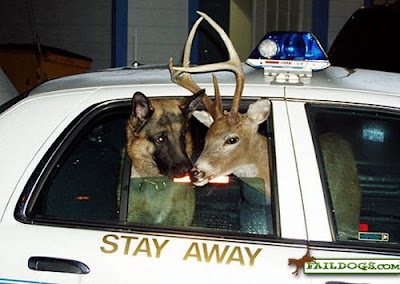 It seems like there are more and more types of collars being marketed every year. A quick trip to your local pet shop for a new collar could turn out to be a long one because it’s easy to get baffled by the huge selection.
It seems like there are more and more types of collars being marketed every year. A quick trip to your local pet shop for a new collar could turn out to be a long one because it’s easy to get baffled by the huge selection.
Do you want/need a "traditional" collar, a harness, or a collar that makes a fashion statement? Do you prefer leather, nylon, metal studs, brass buckles, blue, red, green, or another color? Though you may have a preference, in reality the right collar for your dog is the one that is best for him, not you.
What’s right for one dog may not be right for another
The collar you choose for your dog should be based on several characteristics about your dog: his personality, his level of training, and his body size/shape.
Here’s a look at the most popular types of collars and how those factors can help determine the right one for your dog.
1. Traditional fixed-circumference collars: These collars—whether made of leather, nylon, or another material—have a number of holes that allow you to select the size of the circumference of the collar. Just like a typical belt, once you insert the buckle into the hole you select, the circumference is fixed (unless you change holes). These are the most common type of collars and generally are fine for a large variety of breeds—providing that the dog is relatively well behaved. When fitting your dog for this type of collar, make sure it’s not too loose or too tight. Ideally, you should be able to slip two of your fingers between the collar and your dog’s neck. And make sure the collar can’t slip off your dog’s head.
2. Corrective/chain/slip/choke collars: Unlike fixed-circumference collars, these collars are designed to tighten around a dog’s neck if he pulls on the leash. People sometimes choose these collars if their dogs are not well trained and constantly pull forcefully when being walked. When the collar tightens around the dog’s neck, he should feel discomfort and stop pulling. Before choosing this type of collar, consult with your veterinarian or a professional dog trainer.
3. Harness: A harness differs from a collar because, in addition to going around the neck, it wraps around a dog’s shoulders just behind his front legs. Why is a harness sometimes a better choice? If a dog is known to have respiratory or trachea problems, a harness does not place pressure on that delicate part of his body. Many veterinarians and Dachshund owners believe that a harness is safer and more comfortable than a collar because a collar pulls on the neck and can result in neck or back trauma to these dogs that are prone to disc problems. If not fitted correctly, a traditional collar may also slip off a Dachshund’s long, lean head.
Once you find the right type of collar for your dog, then you can indulge your sense of style and find one with the color, pattern, and material that pleases your eye. And remember, your dog's collar is where you attach vital information: ID tag, phone contacts, pertinent health info, etc. So make sure the collar you choose remains comfortable for your dog after you clip on those important extras.
(content available at pedigree.com)

















